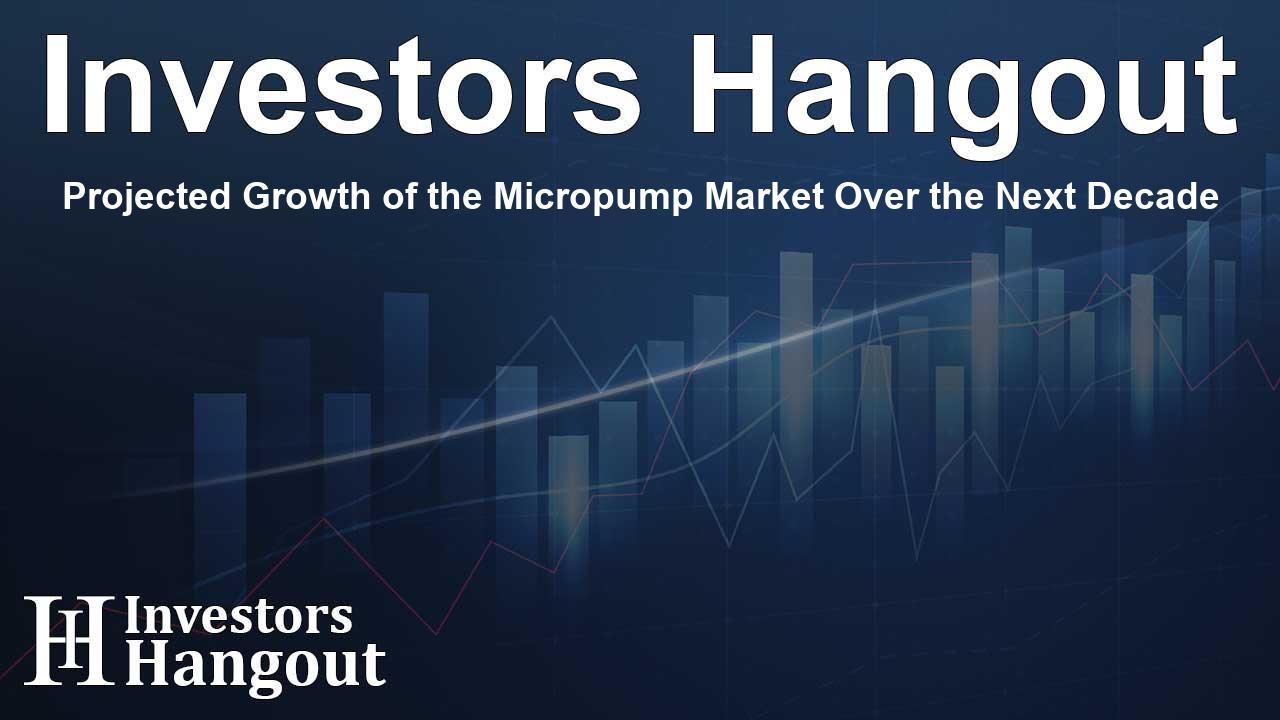Projected Growth of the Micropump Market Over the Next Decade

Micropump Market Growth Forecast
The micropump market is witnessing remarkable expansion, expected to increase from $1.9 billion in 2023 to an impressive $12.4 billion by 2034. This rise represents a compound annual growth rate (CAGR) of 18.7%, fueled by several factors including the increasing aging population and the progressive adoption of advanced medical devices.
Market Applications and Impact
Healthcare Sector Applications
Micropumps have become crucial in healthcare, enhancing drug delivery systems and medical diagnostics. Their precise management of fluid control and dosing makes micropumps indispensable, especially in the realm of wearable medical devices. With the trend toward miniaturized health devices, demand for micropumps is more vital than ever.
Industrial Uses
Beyond healthcare, micropumps are finding substantial applications in the chemical and industrial sectors. Their accuracy in tasks such as fluid transportation and dosing has a significant impact on operational efficiency. As industries strive for precision and reduced waste, the adoption of micropump technology is becoming increasingly prevalent.
Key Market Players and Innovations
Prominent companies leading the micropump market include LEE Ventus Limited, Sensile Medical AG, and Gardner Denver. Continuous innovation from these manufacturers focuses on developing micropumps that are cost-effective, energy-efficient, and compact. These improvements are vital to cater to the rising demand for portable and efficient devices.
Emerging Trends Shaping the Micropump Market
Wearable Medical Devices
The increased adoption of wearable devices, particularly those aimed at health monitoring, is a key trend propelling the micropump market. These devices often require precise fluid management, which micropumps can provide.
Advancements in Drug Delivery Systems
With innovations in controlled and targeted drug delivery systems, the need for advanced micropump technologies has surged. The ability to administer medications effectively and efficiently is paramount in modern healthcare.
Smart Technologies Integration
The integration of IoT technologies with micropumps enhances their functionality, providing real-time monitoring and control of fluid management systems. This revolutionizes the way fluid management is approached across various industries.
Strategic Directions for Growth
Recommendations for Manufacturers
Manufacturers are encouraged to invest in research and development of smart micropumps. AI and IoT integration will play a crucial role in enhancing the effectiveness of these devices in real-life applications.
Investment Opportunities
For investors, identifying high-growth segments within the micropump landscape is essential. Focusing on sectors such as medical devices and MEMS-based micropumps can yield significant returns, especially with growing trends in fuel cells and biotechnology.
Market Segmentation
The micropump market is diverse, segmented by product type, application, and material. Different types of micropumps, such as mechanical and piezoelectric, serve various applications from drug delivery to in-vitro diagnostics.
Future Outlook of the Micropump Market
As we look ahead to the future, the micropump market is expected to benefit from several trending developments. The advent of AI and IoT-enabled smart pumps will likely enhance automated drug delivery and responsive flow rates. Furthermore, the rise in demands for portable medical devices for pain management and insulin delivery presents a strong growth avenue.
Moreover, the expansion of hydrogen fuel cells in electric and clean energy sectors highlights the versatility of micropumps. Sustainable solutions like piezoelectric micropumps will address the market's need for low-power, efficient devices that require minimal maintenance.
Conclusion: Significance for Business Leaders
This growing market poses numerous opportunities for forward-thinking business leaders. Embracing data-driven insights, such as growth forecasts and effective competitor strategies, can help in identifying and capitalizing on emerging trends.
In summary, the micropump market is positioned for significant growth driven by innovation and a shift towards sustainability. Stakeholders who adapt effectively to these changes will maintain a competitive edge in an evolving industry.
Frequently Asked Questions
What is the projected growth of the micropump market?
The micropump market is projected to grow from $1.9 billion in 2023 to $12.4 billion by 2034.
What sectors are driving the demand for micropumps?
Healthcare, chemical, and industrial sectors are the primary drivers of demand for micropumps.
Who are the key players in the micropump market?
Key players include LEE Ventus Limited, Sensile Medical AG, and Gardner Denver.
What are the major applications of micropumps?
Major applications include drug delivery systems, medical devices, and industrial fluid handling.
What are the predicted trends for the micropump market?
Predicted trends include the adoption of smart technologies, increased usage in wearable medical devices, and expansion in hydrogen fuel cell applications.
About The Author
Contact Owen Jenkins privately here. Or send an email with ATTN: Owen Jenkins as the subject to contact@investorshangout.com.
About Investors Hangout
Investors Hangout is a leading online stock forum for financial discussion and learning, offering a wide range of free tools and resources. It draws in traders of all levels, who exchange market knowledge, investigate trading tactics, and keep an eye on industry developments in real time. Featuring financial articles, stock message boards, quotes, charts, company profiles, and live news updates. Through cooperative learning and a wealth of informational resources, it helps users from novices creating their first portfolios to experts honing their techniques. Join Investors Hangout today: https://investorshangout.com/
The content of this article is based on factual, publicly available information and does not represent legal, financial, or investment advice. Investors Hangout does not offer financial advice, and the author is not a licensed financial advisor. Consult a qualified advisor before making any financial or investment decisions based on this article. This article should not be considered advice to purchase, sell, or hold any securities or other investments. If any of the material provided here is inaccurate, please contact us for corrections.
